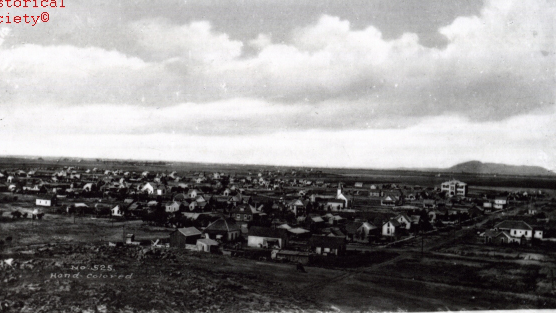SNYDER.
Located in southern Kiowa County, the community of Snyder is situated at the junction of U.S. Highways 183 and 62, twenty-eight miles south of Hobart, twenty-two miles east of Altus, and thirty-six miles west of Lawton. The Burlington Northern Santa Fe Railway runs east and west through town, and the St. Louis and San Francisco Railway (Frisco) extends north and south.
A dispute between the citizens of Mountain Park and Charles G. Jones of Oklahoma City, president of the Oklahoma City and Western Railroad, led him to establish a townsite two miles south of Mountain Park in 1902. Many of the businesses in Mountain Park moved to the new community, which was named Synder in honor of Bryan Snyder of the Frisco railway. The town's first business building was a saloon, and a post office opened in May 1902. Cotton, corn, wheat, and hay harvests were important to the economy. Early newspapers included the Snyder Signal Star, the Otter Valley News, and the Kiowa County Democrat.
In 1905 a tornado devastated Snyder and killed 113 people. Among the dead were Snyder public schools' superintendent Dr. Charles Hibbard and his family. Fires in 1906 and 1909 destroyed most of the wooden structures along Main Street. The charred frame buildings were promptly replaced with fire-resistant brick edifices. Community growth was constant but slow through the years. One of Snyder's illustrious residents was Col. Jack L. Treadway, a Medal of Honor recipient in World War II.
Snyder's population at 1907 statehood was 679. That figure grew to 1,122 in 1910. In 1920 and 1930 the numbers remained stable at 1,197 and 1,195, respectively. The number of residents increased from 1,278 in 1940 to 1,671 in 1970. Peaking at 1,848 in 1980 the population declined to 1,619 in 1990 and to 1,509 in 2000. Into the twenty-first century Snyder, with its mayoral form of government, remained a busy town in ranching and farming country. The 2010 population was 1,394. The April 2020 census reported 1,272 residents.
See Also
Learn More
Clarence W. Gould, "Home Making in the Southwest," Sturm's Oklahoma Magazine 8 (March 1909).
Hobart (Oklahoma) Democrat-Chief, 4 August 1925.
A. Jesse Holhauser, "Snyder, Oklahoma," Sturm's Oklahoma Magazine 3 (October 1906).
Walter McComas, "Snyder, Oklahoma," Sturm's Oklahoma Magazine 5 (November 1907).
Pioneering in Kiowa County, Vol. 1 (Hobart, Okla.: Kiowa County Historical Society, 1975).
"Snyder," Vertical File, Research Division, Oklahoma Historical Society, Oklahoma City.
Citation
The following (as per The Chicago Manual of Style, 17th edition) is the preferred citation for articles:
Ethel Crisp Taylor, “Snyder,” The Encyclopedia of Oklahoma History and Culture, https://www.okhistory.org/publications/enc/entry?entry=SN002.
Published January 15, 2010
Last updated March 29, 2024
© Oklahoma Historical Society


